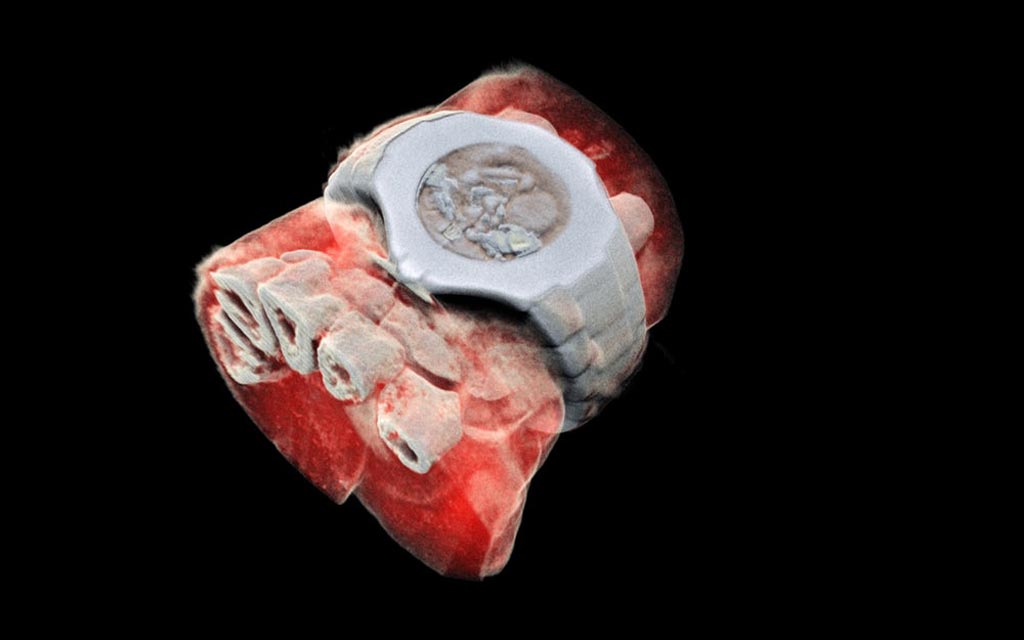Breakthrough Technology Generates 3D Color X-rays
By MedImaging International staff writers
Posted on 23 Jul 2018
Using hybrid pixel-detector technology, a novel three-dimensional (3D) scanner can assign colors to different X-ray photons energy levels, thus identifying water, calcium, and disease markers.Posted on 23 Jul 2018
Researchers at the University of Canterbury (Christchurch, New Zealand), the University of Otago (Christchurch, New Zealand), and other institutions worldwide participating in the CERN Medipix collaboration have successfully scanned human tissues using a breakthrough color medical scanner developed by MARS Bioimaging (Christchurch, New Zealand), which is based on Medipix3 technology.

Image: Professor Phil Butler\'s wrist, including his watch (Photo courtesy of MARS Bioimaging).
Initially developed to address the needs of particle tracking at the CERN Large Hadron Collider, the MARS solution couples the spectroscopic information generated by the Medipix3-enabled detector with powerful algorithms to generate 3D images. By assigning different energy levels of the X-ray photons to distinct colors, the scanner can display high-resolution, high-contrast, and reliable images. A version of the MARS scanner has so far been used to study cancer, bone and joint health, and vascular disease. In the coming months, orthopedic and rheumatology patients in New Zealand will be scanned in a clinical trial of the technology.
“X-ray spectral information allows health professionals to measure the different components of body parts such as fat, water, calcium, and disease markers. Traditional black-and-white x-rays only allow measurement of the density and shape of an object,” said Professor Anthony Butler, PhD, of the University of Otago. “As a new imaging device, a new microscope if you like, biomedical researchers can non-invasively see different kinds of detail inside patients. In all of these studies, promising early results suggest that when spectral imaging is routinely used in clinics, it will enable more accurate diagnosis and personalization of treatment.”
The Medipix3 is a complementary metal-oxide-semiconductor (CMOS) pixel detector readout chip designed to be connected to a segmented semiconductor sensor. It acts as a camera, taking images based on the number of particles, which hit the pixels when the electronic shutter is open. A novel charge summing and allocation scheme is implemented at the pixel level, permitting proper binning of the energy of incoming photons in order to overcome the effects of fluorescence and charge diffusion.
Related Links:
University of Canterbury
University of Otago
MARS Bioimaging














